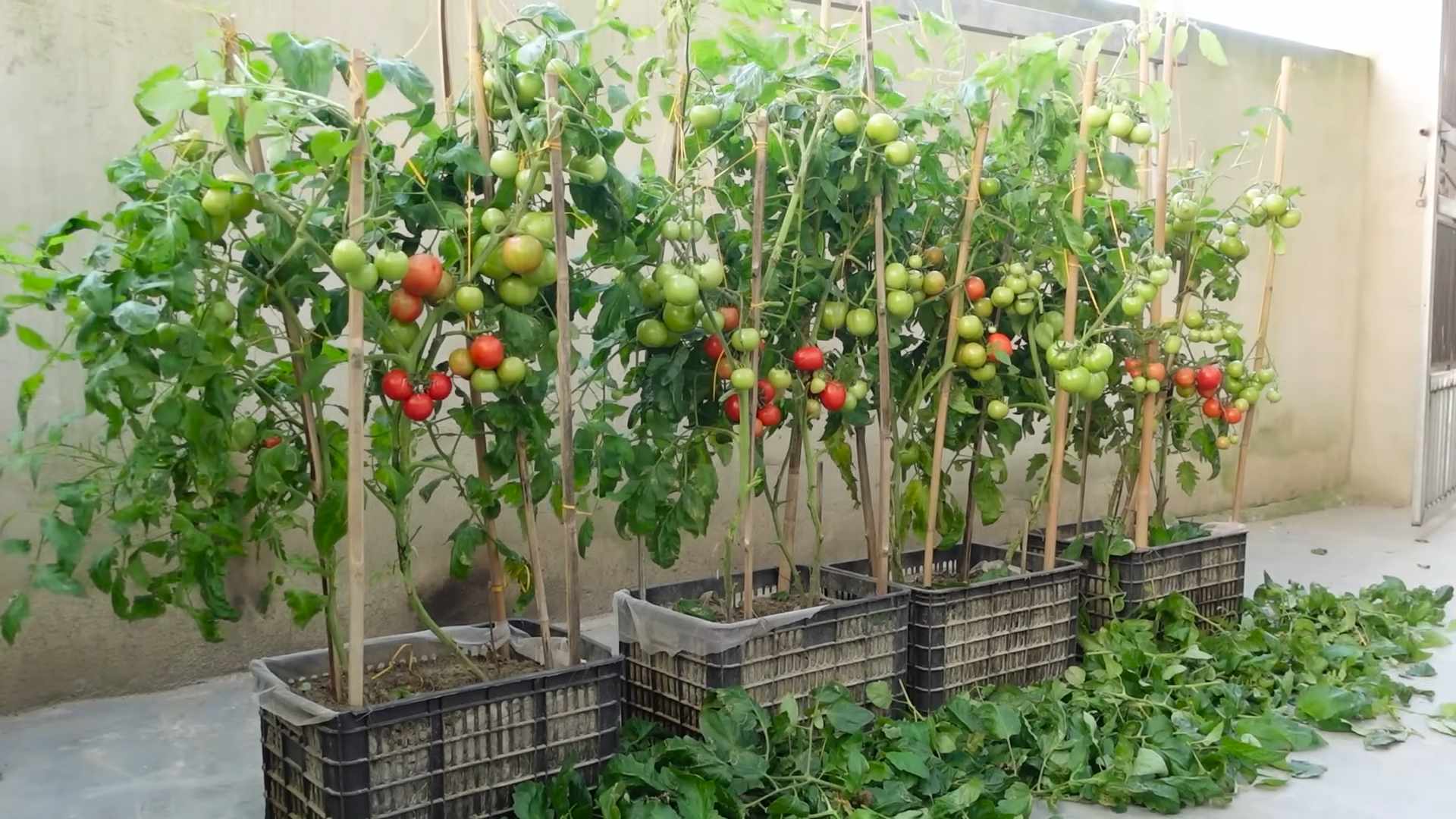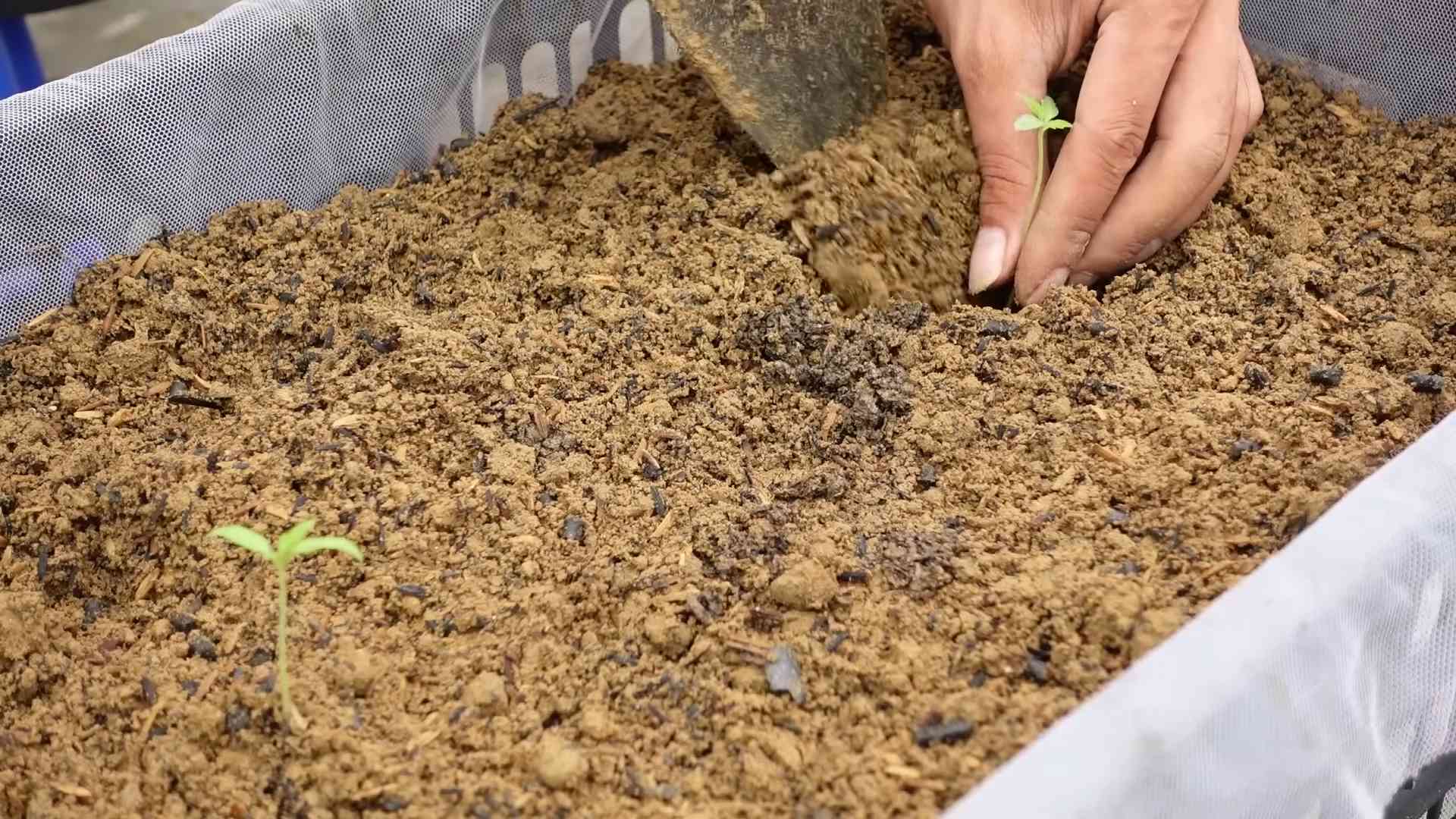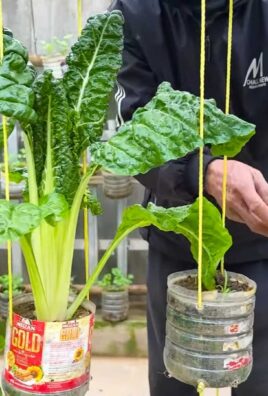Growing Tomatoes at Home can feel like a daunting task, but trust me, it’s more rewarding than you might think! Imagine biting into a juicy, sun-ripened tomato, bursting with flavor, knowing you nurtured it from a tiny seed. That’s the magic of home gardening, and it’s totally achievable, even if you don’t have a sprawling backyard.
Tomatoes have a rich history, originating in South America and gradually making their way into cuisines worldwide. From the vibrant sauces of Italy to the refreshing salads of the Mediterranean, tomatoes are a culinary staple. But beyond their deliciousness, growing tomatoes at home connects us to a tradition of self-sufficiency and appreciation for the natural world.
In today’s busy world, taking the time to cultivate something ourselves can be incredibly therapeutic. Plus, store-bought tomatoes often lack the intense flavor of homegrown varieties. That’s where this DIY guide comes in! I’m going to share some simple yet effective tricks and hacks that will help you successfully grow delicious tomatoes, no matter your experience level or space constraints. Get ready to transform your balcony, patio, or even a sunny windowsill into a thriving tomato garden!

Growing Delicious Tomatoes at Home: A DIY Guide
Hey there, fellow gardening enthusiasts! I’m so excited to share my tried-and-true method for growing juicy, flavorful tomatoes right in your own backyard (or even on your balcony!). Forget those bland, store-bought tomatoes – nothing beats the taste of a homegrown beauty, ripened to perfection under the sun. This guide will walk you through every step, from choosing the right variety to harvesting your bounty. Let’s get started!
Choosing Your Tomato Varieties
Before we even think about soil, let’s talk tomatoes! The sheer variety can be overwhelming, but don’t worry, I’ll break it down. Consider these factors:
* Space: Do you have a sprawling garden or a small patio? Determinate varieties (bush tomatoes) are compact and ideal for containers, while indeterminate varieties (vining tomatoes) need more space and support.
* Climate: Some varieties thrive in hot, humid climates, while others prefer cooler temperatures. Check your local climate zone and choose accordingly.
* Purpose: Are you looking for slicing tomatoes for sandwiches, cherry tomatoes for salads, or paste tomatoes for sauces?
* Disease Resistance: Look for varieties labeled with letters like V, F, N, T, or A. These indicate resistance to common tomato diseases like Verticillium wilt, Fusarium wilt, Nematodes, Tobacco Mosaic Virus, and Alternaria.
Some of my personal favorites include:
* ‘Early Girl’: A reliable, early-producing variety perfect for cooler climates.
* ‘Beefsteak’: Classic large slicing tomatoes, great for burgers and sandwiches.
* ‘Roma’: Ideal for making sauces and pastes.
* ‘Sungold’: Incredibly sweet and flavorful cherry tomatoes.
* ‘San Marzano’: The gold standard for Italian tomato sauces.
Starting Your Tomato Seeds (or Buying Seedlings)
You have two main options here: starting your own seeds indoors or buying seedlings from a nursery. Starting from seed gives you more control over the variety and can be more cost-effective, but it requires a bit more time and effort.
Starting from Seed:
1. Gather Your Supplies: You’ll need seed starting trays or small pots, seed starting mix (not regular potting soil!), tomato seeds, a spray bottle, and a grow light (optional, but highly recommended).
2. Sow the Seeds: Moisten the seed starting mix and fill your trays or pots. Sow the seeds about 1/4 inch deep, placing 2-3 seeds per cell or pot. Gently cover with more mix.
3. Water Carefully: Use a spray bottle to mist the soil. Avoid overwatering, which can lead to damping off (a fungal disease that kills seedlings).
4. Provide Warmth and Light: Place the trays or pots in a warm location (around 70-75°F) and under a grow light. If you don’t have a grow light, a sunny windowsill can work, but be sure to rotate the trays regularly to prevent the seedlings from leaning towards the light.
5. Keep the Soil Moist: Check the soil daily and mist as needed to keep it consistently moist but not soggy.
6. Thin the Seedlings: Once the seedlings have their first true leaves (the second set of leaves that appear after the initial seed leaves), thin them to one seedling per cell or pot. Choose the strongest, healthiest-looking seedling and snip off the others at the soil line.
7. Harden Off the Seedlings: Before transplanting the seedlings outdoors, you need to “harden them off.” This gradually acclimates them to the outdoor environment. Start by placing the seedlings outdoors in a sheltered location for an hour or two each day, gradually increasing the time over a week or two. Protect them from direct sunlight and strong winds.
Buying Seedlings:
1. Choose Healthy Seedlings: Look for seedlings that are stocky, green, and free from spots or blemishes. Avoid seedlings that are leggy (tall and spindly) or have yellowing leaves.
2. Check the Roots: Gently remove a seedling from its pot and inspect the roots. They should be white or light brown and not root-bound (tightly circling the pot).
3. Consider the Size: Choose seedlings that are a manageable size for transplanting.
Preparing Your Garden Bed or Containers
Whether you’re growing in the ground or in containers, proper soil preparation is crucial for healthy tomato plants.
In the Garden:
1. Choose a Sunny Location: Tomatoes need at least 6-8 hours of direct sunlight per day.
2. Prepare the Soil: Dig a hole that is twice as wide and deep as the root ball of your tomato plant. Amend the soil with plenty of compost or well-rotted manure. This will improve drainage, aeration, and nutrient content.
3. Check the Soil pH: Tomatoes prefer a slightly acidic soil pH of around 6.0-6.8. You can test your soil pH with a soil testing kit and amend it accordingly.
4. Add Fertilizer: Incorporate a slow-release tomato fertilizer into the soil. Follow the instructions on the fertilizer package.
In Containers:
1. Choose the Right Size Container: Determinate varieties need at least a 5-gallon container, while indeterminate varieties need at least a 10-gallon container.
2. Use High-Quality Potting Mix: Don’t use garden soil in containers, as it can become compacted and poorly drained. Use a high-quality potting mix specifically formulated for vegetables.
3. Ensure Good Drainage: Make sure your container has drainage holes to prevent waterlogging.
4. Add Fertilizer: Incorporate a slow-release tomato fertilizer into the potting mix.
Transplanting Your Tomato Plants
Now comes the exciting part – getting those tomato plants into their new home!
1. Choose a Cloudy Day: Transplanting on a cloudy day will help reduce stress on the plants.
2. Dig the Hole: Dig a hole that is deep enough to bury the bottom third of the tomato plant’s stem. This encourages the plant to develop more roots along the buried stem, resulting in a stronger, healthier plant.
3. Remove the Bottom Leaves: Gently remove the bottom leaves from the tomato plant.
4. Place the Plant in the Hole: Carefully place the tomato plant in the hole, ensuring that the bottom third of the stem is buried.
5. Backfill with Soil: Backfill the hole with soil, gently firming it around the plant.
6. Water Thoroughly: Water the plant thoroughly to help settle the soil.
7. Add Support: If you’re growing indeterminate varieties, install stakes, cages, or trellises to support the plants as they grow. I prefer using tomato cages, as they provide good support and allow the plants to grow naturally.
8. Mulch: Apply a layer of mulch around the base of the plants to help retain moisture, suppress weeds, and regulate soil temperature. Straw, shredded leaves, or wood chips are all good options.
Caring for Your Tomato Plants
Once your tomato plants are in the ground, it’s important to provide them with the care they need to thrive.
1. Water Regularly: Tomatoes need consistent watering, especially during hot, dry weather. Water deeply and infrequently, rather than shallowly and frequently. Aim to water at the base of the plant to avoid wetting the foliage, which can promote disease.
2. Fertilize Regularly: Feed your tomato plants with a balanced tomato fertilizer every 2-3 weeks. Follow the instructions on the fertilizer package.
3. Prune Your Plants: Pruning can help improve air circulation, reduce disease, and encourage fruit production. Remove suckers (the small shoots that grow between the main stem and the branches) to direct the plant’s energy towards fruit production.
4. Control Pests and Diseases: Keep an eye out for common tomato pests like aphids, tomato hornworms, and whiteflies. Handpick pests or use organic pest control methods like insecticidal soap or neem oil. Prevent diseases by providing good air circulation, avoiding overhead watering, and using disease-resistant varieties.
5. Provide Support: As your tomato plants grow, continue to provide support with stakes, cages, or trellises. This will prevent the plants from collapsing under the weight of the fruit.
Harvesting Your Tomatoes
The moment you’ve been waiting for! Harvesting your own homegrown tomatoes is incredibly rewarding.
1. Look for Color: Tomatoes are ripe when they are fully colored and slightly soft to the touch. The color will vary depending on the variety.
2. Gently Twist: Gently twist the tomato from the vine. If it doesn’t come off easily, it’s not quite ripe yet.
3. Store Properly: Store ripe tomatoes at room temperature, away from direct sunlight. Refrigerating tomatoes can affect their flavor and texture.
Trou

Conclusion
So, there you have it! Growing tomatoes at home, while it might seem daunting at first, is an incredibly rewarding experience. From the vibrant colors to the unmatched flavor of a sun-ripened tomato fresh from your own garden, the benefits far outweigh the effort. We’ve covered everything from seed starting to transplanting, watering, and even dealing with common pests and diseases. Remember, patience is key. Don’t get discouraged if your first attempt isn’t perfect. Gardening is a learning process, and each season brings new opportunities to refine your skills and techniques.
The real magic of growing your own tomatoes lies in the control you have over the entire process. You know exactly what goes into your food, avoiding harmful pesticides and ensuring the highest quality produce for yourself and your family. Plus, there’s a certain satisfaction that comes from nurturing a tiny seed into a thriving plant that yields delicious fruit. It’s a connection to nature that’s hard to replicate.
But the fun doesn’t stop there! Feel free to experiment with different varieties of tomatoes. From the classic beefsteak to the sweet cherry tomato, the possibilities are endless. Try growing heirloom varieties for unique flavors and colors, or explore container gardening if you’re short on space. You can even try different companion planting techniques to improve the health and yield of your tomato plants. Basil, for example, is a great companion plant for tomatoes, as it helps to repel pests and improve the flavor of the fruit. Marigolds are another excellent choice for pest control.
Consider creating a small greenhouse or cold frame to extend your growing season. This will allow you to start your tomato plants earlier in the spring and continue harvesting them later into the fall. You can also experiment with different soil amendments to improve the fertility and drainage of your soil. Compost, aged manure, and bone meal are all excellent choices.
Growing tomatoes at home is more than just a hobby; it’s a lifestyle. It’s a way to connect with nature, eat healthier, and enjoy the fruits (literally!) of your labor. So, grab some seeds, get your hands dirty, and start growing your own tomatoes today. You won’t regret it!
We encourage you to try these tips and share your experiences with us. Let us know what varieties you’re growing, what challenges you’ve faced, and what successes you’ve achieved. Share your photos and stories in the comments below. We’d love to hear from you! Happy gardening!
Frequently Asked Questions (FAQ)
Q: How much sun do tomato plants need?
A: Tomato plants are sun-loving creatures and require at least 6-8 hours of direct sunlight per day to thrive. Insufficient sunlight can lead to leggy growth, reduced fruit production, and bland-tasting tomatoes. Choose a location in your garden that receives full sun throughout the day. If you’re growing tomatoes in containers, make sure to place them in a sunny spot on your patio or balcony. If you live in a particularly hot climate, providing some afternoon shade can help prevent the plants from getting scorched.
Q: What kind of soil is best for growing tomatoes?
A: Tomatoes prefer well-drained, fertile soil that is rich in organic matter. The ideal soil pH for tomatoes is between 6.0 and 6.8. Before planting, amend your soil with compost, aged manure, or other organic materials to improve its fertility and drainage. Avoid heavy clay soils, as they can become waterlogged and suffocate the roots. If you have clay soil, consider growing your tomatoes in raised beds or containers with a well-draining potting mix. You can also add perlite or vermiculite to your soil to improve drainage.
Q: How often should I water my tomato plants?
A: The watering needs of tomato plants vary depending on the weather, soil type, and stage of growth. Generally, you should water your tomato plants deeply and regularly, especially during hot, dry weather. Aim to keep the soil consistently moist but not waterlogged. Water at the base of the plant to avoid wetting the foliage, which can increase the risk of fungal diseases. A good rule of thumb is to water when the top inch of soil feels dry to the touch. During fruiting, tomato plants require more water than during vegetative growth. Consider using a soaker hose or drip irrigation system to deliver water directly to the roots.
Q: How do I prevent blossom end rot?
A: Blossom end rot is a common problem in tomatoes that is caused by a calcium deficiency. It appears as a dark, leathery spot on the bottom of the fruit. To prevent blossom end rot, ensure that your soil is rich in calcium and that your tomato plants receive consistent watering. You can add lime or bone meal to your soil to increase the calcium content. Avoid over-fertilizing with nitrogen, as this can interfere with calcium uptake. Mulching around your tomato plants can help to retain moisture in the soil and prevent fluctuations in watering. If you experience blossom end rot, you can spray your plants with a calcium chloride solution.
Q: What are some common tomato pests and diseases?
A: Tomatoes are susceptible to a variety of pests and diseases, including aphids, whiteflies, tomato hornworms, early blight, late blight, and fusarium wilt. To prevent pest and disease problems, choose disease-resistant varieties of tomatoes, practice good sanitation in your garden, and monitor your plants regularly for signs of trouble. Remove any infected leaves or plants immediately. You can use organic pesticides, such as insecticidal soap or neem oil, to control pests. For fungal diseases, you can use copper-based fungicides. Crop rotation can also help to prevent soilborne diseases.
Q: When should I harvest my tomatoes?
A: Tomatoes are typically ready to harvest when they are fully colored and slightly soft to the touch. The exact color will depend on the variety of tomato you are growing. Gently twist the tomato from the vine, leaving the stem attached. Avoid squeezing the tomato, as this can bruise the fruit. Tomatoes will continue to ripen after they are picked, so you can harvest them slightly underripe if you need to. Store your harvested tomatoes at room temperature, away from direct sunlight. Do not refrigerate tomatoes, as this can affect their flavor and texture.
Q: Can I grow tomatoes in containers?
A: Yes, you can definitely grow tomatoes in containers! Choose a large container that is at least 20 gallons in size to provide enough room for the roots to grow. Use a well-draining potting mix and make sure the container has drainage holes. Dwarf or determinate varieties of tomatoes are best suited for container gardening. Water your container tomatoes regularly, as they tend to dry out more quickly than tomatoes grown in the ground. Fertilize your container tomatoes every two weeks with a balanced fertilizer. Provide support for your tomato plants with stakes or cages.
Q: What are some good companion plants for tomatoes?
A: Companion planting can be a great way to improve the health and yield of your tomato plants. Some good companion plants for tomatoes include basil, marigolds, carrots, onions, and garlic. Basil helps to repel pests and improve the flavor of tomatoes. Marigolds also repel pests and attract beneficial insects. Carrots help to loosen the soil and improve drainage. Onions and garlic deter pests and can help to prevent fungal diseases. Avoid planting tomatoes near brassicas, such as cabbage and broccoli, as they can compete for nutrients.
Q: How do I save tomato seeds for next year?
A: Saving tomato seeds is a great way to preserve your favorite varieties and save money. Choose ripe, healthy tomatoes from disease-free plants. Squeeze the seeds and pulp into a jar and add a little water. Let the mixture ferment for 3-4 days, stirring occasionally. This process will help to remove the gelatinous coating from the seeds. Rinse the seeds thoroughly and spread them out on a paper towel to dry. Once the seeds are completely dry, store them in an airtight container in a cool, dark place. Tomato seeds can remain viable for several years.





Leave a Comment